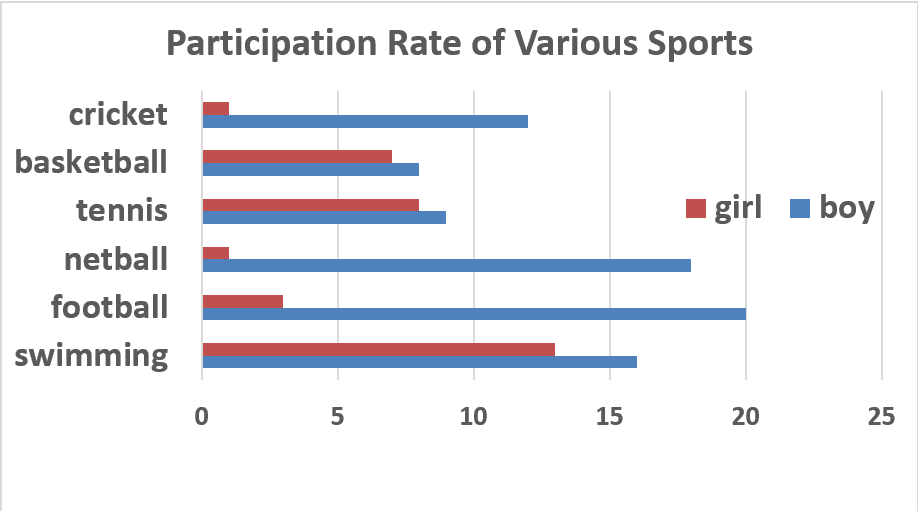托福写作28分的大神分享了他的高分秘籍,快来了解一下,今天小编给大家带来托福写作28分秘籍,下面小编就和大家分享,来欣赏一下吧。
托福写作28分的大神分享了他的高分秘籍,快来了解一下
托福写作拿高分我认为主要是2点:论据够充分和字数足够。
论据充分,就是要条理清晰,分点论证。从为什么我的观点就是好的、反对的观点就是不好的这两方面论证,中间再穿插例子(我的叔叔姨妈就是因为不喜欢锻炼身体导致现在老是要去医院、牛津大学的Sid教授开展过一个能说明这个问题的实验或者调查等等的例子都可以用,要信手拈来)。此外,还可以说说自己看过的书或者电影里出现过能帮助你论证的例子,都是加分项!
字数到底重不重要呢?我认为在不是native speaker或者不是英语写作水平极高的条件下,想要拿高分必须字数写得越多越好。个人认为字数多的标准是综合写作为300,独立写作400以上。网上有这么一个传闻,说托福的写作评分系统是这样的:先机器扫一遍作文,根据单词有无拼错、语法有无问题给出一个系统评分;再到人工批改,最后给出综合得分。其中大家普遍猜测的原理是机器批改计算单词语法错误时,分母越大,也就是你的字数多,错误比就会越低,分数也就会越高。字数多其实并不难,模板就占了100多字,只要平时练习的时候熟悉了敲模版,考试的时候敲起来速度极快,既节省了时间又增加了字数,还能在敲模版的时候思考接下来改如何举例论证观点。
另外,综合写作最重要是把听力里的内容写进作文里,写越多越好!因为阅读力的文字一直都会出现,所以听力才是真本事!听力文章一般都分为3个点,记笔记的时候也要分3个点来记。写清楚现象、原因和其他一些细节,特别是与阅读文章有对比的地方。记好模板,写作的时候把笔记往上套就ok!
我在备考的时候整理出了自己的模板,现在分享出来,同在备考托福路上的小伙伴们可以参考,写出自己独一无二的模板。备考的时候背熟悉敲熟悉,考试的时候就能一边打字一边思考要怎么写了。
综合写作模版
The reading passage explores the issue of X.X.X(阅读总结)The professor's lecture deals with the same issue.However,he/she thinks that X.X.X(听力总结),which contradicts what the reading states.And in the lecture,he/she uses 3 specific points to support his/her idea.
To begin with,even though the reading passage suggests thatX.X.X(阅读第一个观点),the professor argues in the lecture that X.X.X(听力第一个观点总结).This is because X.X.X,which means X.X.X.(听力第一个观点展开来说)Obviously,the professor's argument disproves its counterpart in the reading.
Secondly,despite the statement in the reading that X.X.X(阅读第二个观点总结),the professor contends that X.X.X.(听力第二个观点总结)Then he/she supports this point of view with the fact that X.X.X.(听力第二个观点展开来说)
Finally,the professor asserts that X.X.X,(听力第三个观点总结)whereas the reading claims that X.X.X(阅读第三个观点总结).The professor proves his/her idea is indefensible by pointing out that X.X.X.(听力第三个观点展开来说)
怎样才能写出一篇高分托福作文?
俗话说知己知彼百战不殆,想要在托福写作中获得高分,我们需要首先明确高分作文到底长啥样,而其实当我们认真揣摩了OG(官方指南)上的托福写作评分标准后,我们会发现,ETS 其实早已告知我们托福写作的高分秘诀了。
《新托福官方指南(第三版)》(英文版)P209:
• effectively addresses the topic and task;
• is well organized and well developed, using clearly appropriate explanations, exemplifications, and/or details;
• displays unity, progression, and coherence;
• displays consistent facility in the use of language, demonstrating syntactic variety, appropriate word choice, and idiomaticity, though it may have minor lexical or grammatical errors.
01 作文要“切题”
恰当的开题源于仔细的审题。这一点对于同学们来说应该没有什么问题,因为托福写作无非是问你是否同意某个特定的观点,只要题目中的单词大部分都认识,理解上就不应有误差。但值得注意的是,对于某些特定的、看似能够从“两个或者更多角度来分开阐述”的话题,无论选择其中的哪一个角度(甚至两个角度都讨论到),也都可算“切题”。比如关于“Parents are the best teachers”这个话题,无论是从“the best”入手,讨论“父母是否是最好的老师”,或者从“parents”来入手,讨论是否“所有的父母都是好老师”都没有问题,都符合“切题”的要求。
02 条理清晰,言之有物
第二条标准,直译过来唤作“良好的组织,良好的发展,并且使用了恰当的阐述、举例和/或细节”。
我们把这条标准分为两个部分,前半部分称为“条理清晰”,后半部分称为“言之有物”。若只有条理,没有内容,文章难免陷入空泛,读者则味同嚼蜡,毫无趣味;若只有内容,没有条理,则会让读者觉得一团乱麻,不知所言;两者着实缺一不可——想要做到这一点,我们当然需要狠下些工夫。
03 行文流畅
第三条标准,是要求文章展现出良好的“统一、发展和连贯性”:总的来说,就是要求“行文流畅”。
这一要求十分严苛,绝非一朝一夕所能练就。说到这里就不得不提一下“模板作文”,这是一个很值得“再商榷”的方法,事实上ETS在《新托福官方指南(第三版)》英文版 P207 页就有专门针对模板的论述,ETS的态度可谓不坚决,劝考生“不要仅仅为了增加文字字数而死记硬背一些冗长的首、末段,评分人员不会看好那些累赘的段落”。所以,使用模板有危险性,要慎重。
04 良好的语言能力
第四条标准,强调的是“良好的语言能力”,无论是“多样性”和“恰当性”,都不易于达到。
而且要体现自身的语言“掌控能力”,方法的确并不唯一:有些满分作文以“精妙”取胜,使用诸多复杂句型来展现语言水平;也有人是使用“简明质朴”的句子,清楚地表达自己的含义,往往也能够取得近乎满分的成绩。但不管哪种方法,都不是一天能达成的。我并不是认为语言不重要,但语言的确不是在短期取得分数飞跃的突破口。
托福阅读真题原题+题目
Glass fibers have a long history. The Egyptians made coarse fibers by 1600 B.C., and fibers survive as decorations on Egyptian pottery dating back to 1375 B.C. During the Renaissance (fifteenth and sixteenth centuries A.D.), glassmakers from Venice used glass fibers to decorate the surfaces of plain glass vessels. However, glassmakers guarded their secrets so carefully that no one wrote about glass fiber production until the early seventeenth century.
The eighteenth century brought the invention of spun glass fibers. R é ne-Antoine de R é a French scientist, tried to make artificial feathers from glass. He made fibers by rotating a wheel through a pool of molten glass, pulling threads of glass where the hot thick liquid stuck to the wheel. His fibers were short and fragile, but he predicted that spun glass fibers as thin as spider silk would be flexible and could be woven into fabric.
By the start of the nineteenth century, glassmakers learned how to make longer, stronger fibers by pulling them from molten glass with a hot glass tube. Inventors wound the cooling end of the thread around a yarn reel, then turned the reel rapidly to pull more fiber from the molten glass. Wandering tradespeople began to spin glass fibers at fairs, making decorations and ornaments as novelties for collectors, but this material was of little practical use; the fibers were brittle, ragged, and no longer than ten feet, the circumference of the largest reels. By the mid-1870's, however, the best glass fibers were finer than silk and could be woven into fabrics or assembled into imitation ostrich feathers to decorate hats. Cloth of white spun glass resembled silver; fibers drawn from yellow-orange glass looked golden.
Glass fibers were little more than a novelty until the 1930's, when their thermal and electrical insulating properties were appreciated and methods for producing continuous filaments were developed. In the modern manufacturing process, liquid glass is fed directly from a glass-melting furnace into a bushing, a receptacle pierced with hundreds of fine nozzles, from which the liquid issues in fine streams. As they solidify, the streams of glass are gathered into a single strand and wound onto a reel.
1. Which of the following aspects of glass fiber does the passage mainly discuss?
(A) The major developments in its production
(B) Its relationship with pottery making
(C) Important inventors in its long history
(D) The variety of its uses in modern industry
2. The word coarse in line 1 is closest in meaning to
(A) decorative
(B) natural
(C) crude
(D) weak
3. Why was there nothing written about the making of Renaissance glass fibers until the seventeenth century?
(A) Glassmakers were unhappy with the quality of the fibers they could make.
(B) Glassmakers did not want to reveal the methods they used.
(C) Few people were interested in the Renaissance style of glass fibers.
(D) Production methods had been well known for a long time.
4. According to the passage , using a hot glass tube rather than a wheel to pull fibers from molten
glass made the fibers
(A) quicker to cool
(B) harder to bend
(C) shorter and more easily broken
(D) longer and more durable
5. The phrase this material in line 16 refers to
(A) glass fibers
(B) decorations
(C) ornaments
(D) novelties for collectors
6. The word brittle in line 17 is closest in meaning to
(A) easily broken
(B) roughly made
(C) hairy
(D) shiny
7. The production of glass fibers was improved in the nineteenth century by which of the
following
(A) Adding silver to the molten glass
(B) Increasing the circumference of the glass tubes
(C) Putting silk thread in the center of the fibers
(D) Using yarn reels
8. The word appreciated in line 23 is closest in meaning to
(A) experienced
(B) recognized
(C) explored
(D) increased
9. Which of the following terms is defined in the passage ?
(A) invention (line 7)
(B) circumference (line 17)
(C) manufacturing process (line 24)
(D) bushing (line 25)
PASSAGE 53 ACBDA ADBD
托福写作28分秘籍
下一篇:15条应试技巧助你托福再提10分





